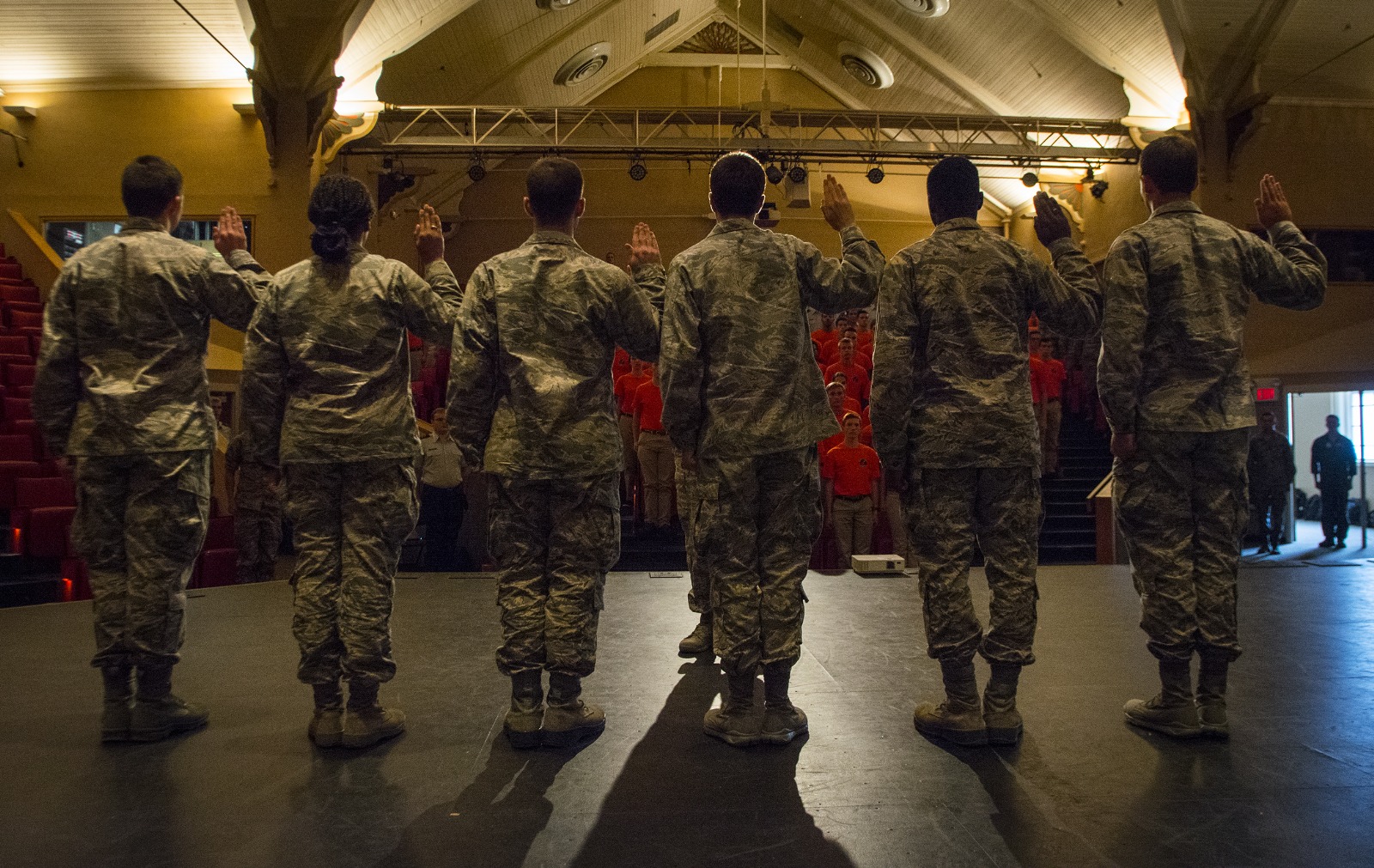What legal issues are posed by the proposed "Warrior Boards" for U.S. military leaders?
The proposed “Warrior Boards” pose significant legal challenges for U.S. military leaders:
- Constitutional Concerns: Potential violations of the Appointments Clause and due process rights, as retired officers may require Senate confirmation.
- Ideological Purges: Removals based on vague criteria like “lacking leadership qualities” could undermine merit-based promotions.
- Apolitical Tradition: Threats to the military’s long-standing nonpartisan ethos, codified in laws like the Hatch Act and DoD Directive 1344.10.
- National Security Risks: Destabilizing military operations and potentially eroding public trust.
- Legal Remedies: Judicial review, administrative separation boards, and the Board for Correction of Military Records offer avenues for challenging unlawful removals.
These challenges stem from a radical departure from traditional leadership selection processes, prioritizing ideological alignment over merit and professionalism. The Law Office of Will M. Helixon provides specialized support to navigate these risks, ensuring that military leaders can defend their careers against political weaponization.
Part 4 of 10: The "Warrior Boards" Proposal – A Threat to Military Apoliticism – Trump Administration Changes Affecting Military Law
The U.S. military’s long-standing tradition of apolitical leadership is facing an unprecedented challenge with the proposed “Warrior Boards,” a radical initiative that could redefine the relationship between civilian leadership and the armed forces. On the heels of a century of efforts to professionalize and depoliticize the military, President Donald Trump’s draft executive order has ignited fierce debate over its legality, historical precedents, and potential impact on civil-military relations. This 10-part series explores the seismic shifts in military policy, focusing on the legal, ethical, and strategic implications of such a profound departure from tradition.
In this installment, we analyze:
- The historical context of military leadership selection and the evolution of the apolitical ethos
- Legal and constitutional challenges posed by the “Warrior Boards,” including potential violations of the Appointments Clause and due process concerns
- The role of military lawyers in defending against ideologically driven purges and ensuring due process for targeted officers
- The broader implications for national security and democratic governance, including the potential erosion of public trust and destabilization of military operations
- The legal safeguards available to service members facing removal, such as judicial review and administrative separation boards
Understanding the stakes and potential consequences of such a radical departure from tradition is more important than ever as the U.S. navigates this critical juncture. Subsequent articles will delve into related policy changes, including the impact on military readiness, the role of retired officers in political activism, and the evolving landscape of civil-military relations.
Next in Series: Part 5 – The Weight of a Name: Reverting U.S. Army Bases to Confederate Legacies – Trump Administration Changes Affecting Military Law
Previous in Serious: Part 3 – Mexican Border Battleground and Domestic Operations – Trump Administration Changes Affecting Military Law
Guardians of Democracy: The U.S. Military’s Struggle to Balance Influence and Apolitical Integrity
The political influence of senior U.S. military leaders has evolved dramatically over centuries, reflecting tensions between democratic ideals and the realities of power. From the nation’s founding through the Civil War, military and political spheres were deeply intertwined, with figures like George Washington and Andrew Jackson embodying the “citizen-soldier” ideal. Nearly half of America’s first presidents were generals, and officers openly lobbied Congress, conspired with politicians, or leveraged connections for personal gain. This era of politicization peaked under President Andrew Jackson, who weaponized military appointments as patronage.
By the late 19th century, reformers like Generals William Tecumseh Sherman and Emory Upton sought to professionalize the military, cementing an apolitical ethos. The Grand Army of the Republic’s sway over elections highlighted risks, prompting stricter norms: officers swore loyalty to the Constitution, not parties, and service academies indoctrinated nonpartisanship. Post-WWII, figures like George C. Marshall epitomized this ethic, refusing to vote to avoid perceived bias. Yet cracks emerged as retired generals increasingly endorsed candidates—Colin Powell’s 1996 Clinton endorsement marked a turning point, normalizing political activism among veterans.
Institutional Responses and Legal Frameworks
The military’s apolitical stance is codified in laws like the Hatch Act (1939) and DoD Directive 1344.10, which bar active-duty personnel from partisan activities, including campaigning, fundraising, or wearing uniforms at political events. Violations carry penalties under the Uniform Code of Military Justice, ranging from reprimands to court-martial. While no longer bound by these rules, retired officers face ethical scrutiny; figures like Michael Flynn (a Trump campaign surrogate) and William McRaven (a Biden supporter) sparked debates over whether retired leaders should remain silent.
Crises have tested the military’s apolitical identity. During the 2020 election, Chairman of the Joint Chiefs Gen. Mark Milley publicly apologized for appearing in a politically charged photo-op with President Trump, reaffirming the military’s neutrality. Conversely, Project 2025—a conservative policy blueprint—recently alarmed lawmakers by proposing expanded domestic military roles, prompting bipartisan calls to reinforce constitutional limits.
The Apolitical Imperative
Senior leaders are expected to prioritize institutional integrity over personal beliefs. The oath to “support and defend the Constitution” underscores loyalty to the nation, not individual leaders. This principle is vital for maintaining public trust: 69% of Americans viewed the military as the most trusted institution in 2021. However, polarization has intensified pressures. Retired officers now openly endorse candidates, and studies show 54% of senior officers identify as Republicans, raising concerns about partisan bias.
The military’s response has emphasized education and accountability. Training programs stress ethical boundaries, while the National Security Council (NSC) institutionalizes nonpartisan advice. Yet challenges persist. Historical precedents—like LBJ’s distrust of Gen. William Westmoreland or Trump’s “my generals” rhetoric—reveal how fear of politicization can distort strategy.
The U.S. military navigates a paradox: its strength derives from public trust, yet its apolitical stance is perpetually threatened by the very democracy it serves. As retired Gen. Martin Dempsey warned, “The military is not a political prize.” Upholding this ideal remains a cornerstone of American democracy, even as partisan tides rise.
Know Your Rights: Consult experts on military leadership challenges.

The “Warrior Boards”: A Seismic Shift in Military Leadership
President Donald Trump’s proposed “Warrior Boards” represent a radical departure from traditional military leadership selection processes, aiming to reshape the upper echelons of the U.S. armed forces based on ideological alignment. This controversial initiative, outlined in a draft executive order, has ignited fierce debate over its legality, historical precedents, and potential impact on civil-military relations. The boards would consist of retired senior military officers appointed by Trump, tasked with reviewing three- and four-star generals and admirals. Their mandate: to identify and remove leaders deemed “woke” or lacking “essential leadership qualities” – a vague criterion that critics argue could target support for diversity initiatives, vaccine mandates, or perceived disloyalty to Trump’s agenda. The process would evaluate service records, public statements, and adherence to Trump’s policies, with “unfit” officers facing forced retirement or demotion within 30 days. This approach would bypass the Pentagon’s traditional promotion system and Senate confirmation process, relying instead on presidential authority to revoke assignments or demand resignations.
A Break from Historical Norms
While the U.S. military has periodically adjusted its leadership during times of crisis, the “Warrior Board” concept represents a significant departure from historical norms. Unlike General George C. Marshall’s “Plucking Board” of 1941, which focused on merit and wartime readiness, Trump’s proposal appears driven by ideological considerations. Past instances of presidential intervention in military leadership, such as Truman’s firing of MacArthur, were isolated cases tied to specific conflicts rather than systemic purges. The closest historical parallel might be Andrew Jackson’s 19th-century patronage system, a practice long since abandoned in favor of a professionalized, apolitical military. This lack of modern precedent for assessing officers based on political alignment underscores the radical nature of the “Warrior Boards” proposal.
Legal and Constitutional Quagmire
The “Warrior Board” proposal raises many legal and constitutional issues that would likely face intense scrutiny and challenge. Questions arise regarding the Appointments Clause, as retired officers serving on the board may be considered “inferior officers” under the Constitution, potentially requiring Senate confirmation. Due process concerns loom large, as officers could face removal based on vague criteria without clear evidence of misconduct. The proposal also risks running afoul of the Hatch Act and the military’s long-standing apolitical tradition, codified in Department of Defense directives. Furthermore, bypassing Senate confirmation for general promotions could weaken crucial checks on executive power. Perhaps most alarmingly, experts warn that such purges could severely destabilize military operations by removing experienced leaders, potentially hollowing out critical commands and undermining overall readiness.

Navigate Uncertain Times: Seek guidance on evolving military policies.
A Threat to Democratic Foundations
The broader implications of the “Warrior Boards” proposal are profound and deeply concerning. Critics from across the political spectrum have sounded the alarm, with retired General Paul Eaton characterizing it as a step toward a “MAGA Military” loyal to Trump rather than the Constitution. The potential chilling effect on serving officers, who may fear retribution for past compliance with diversity initiatives or vaccine policies, could stifle the candid advice crucial to effective military leadership. On the global stage, adversaries like China could exploit perceived instability in U.S. military leadership, potentially weakening America’s strategic position. While supporters argue the boards would root out “anti-American” ideologies, critics convincingly liken them to authoritarian loyalty tests that could inflict lasting damage on military professionalism and the nation’s democratic foundations.
Trump’s “Warrior Boards” represent an unprecedented and dangerous shift toward politicizing military leadership, leveraging presidential authority to enforce ideological conformity within the armed forces. While historical precedents exist for leadership reviews, none align with the scale or intent of this proposal. As legal challenges loom and debate intensifies, the most significant risk lies in the potential erosion of the military’s apolitical tradition – a cornerstone of American democracy that has long set the United States apart from authoritarian regimes. The “Warrior Boards,” if implemented, could fundamentally alter the relationship between civilian leadership and the military, with far-reaching consequences for national security and democratic governance.
Shielding Service Members: Legal Protections Against Political Purges
The proposed “Warrior Boards” threaten to dismantle decades of military professionalism by subjecting senior leaders to ideologically driven reviews. Targeted generals and admirals retain critical defenses anchored in constitutional principles, military regulations, and legal recourse mechanisms. Military law firms like the Law Office of Will M. Helixon stand ready to assist “big law” firms in challenging unlawful removals with their specialized military justice and administrative procedures knowledge, ensuring careers built on merit and service are shielded from political weaponization.
Legal Safeguards for Targeted Leaders
The Fifth Amendment guarantees service members protections against arbitrary deprivation of rank or career, empowering targeted leaders to challenge removals by exposing procedural flaws such as inadequate notice of allegations or denial of rebuttal opportunities. Administrative separation boards—governed by regulations like AR 600-8-24 (Army) and SECNAVINST 1920.6D (Navy)—require evidence of misconduct or substandard performance; deviations from these standards could invalidate decisions. Judicial review offers another lifeline: officers may petition federal courts to block removals if “Warrior Boards” violate the Appointments Clause (by bypassing Senate confirmation) or employ unconstitutionally vague criteria like “lacking leadership qualities.” The Board for Correction of Military Records (BCMR) further enables reinstatement or rank restoration for unjust actions. Crucially, DoD Directive 1344.10 and the Uniform Code of Military Justice (UCMJ) bar partisan litmus tests, safeguarding against punitive measures for lawful policy disagreements.
Preserve Military Honor: Understand threats to service integrity.

Warrior AdvocatesTM: Planning for the Future
Firms like the Law Office of Will M. Helixon deploy a multi-pronged defense strategy in defending service members being unjustly discharged. Preemptive counseling equips leaders to navigate political pressures, document performance metrics, and rebut unfounded critiques of DEI initiatives or vaccine mandates. Administrative challenges include filing Article 138 complaints to combat unlawful command influence if commanders are involved in the decision-making process and representing officers at Boards of Inquiry with evidence of exemplary service. In federal courts, the Warrior Law TeamTM can team with others to petition to block removals under the Administrative Procedure Act (APA) for “arbitrary and capricious” actions and pursue defamation claims if public statements tarnish reputations. Appeals via the BCMR and challenges to politicize security clearance revocations further fortify defenses.
Broader Implications and Institutional Defense
Collaboration with advocacy groups like the National Veterans Legal Services Program (NVLSP) amplifies systemic due process risks through amicus briefs. At the same time, public transparency campaigns expose procedural irregularities—mirroring Lt. Joshua Waddell’s exoneration for Rules of Engagement violations. Historical precedents, such as Gen. George Marshall’s merit-based “Plucking Board,” starkly contrast Trump’s ideological purge, underscoring the erosion of nonpartisan traditions. Retired Gen. Paul Eaton’s warning of a “MAGA Military” looms large, emphasizing the peril of trading constitutional duty for partisan loyalty.
Conclusion
While “Warrior Boards” pose unprecedented threats to military apoliticism, targeted leaders are not defenseless. Robust legal frameworks—rooted in due process, judicial oversight, and regulatory firewalls—offer critical shields. Military law firms like the Law Office of Will M. Helixon are pivotal in preserving meritocracy, ensuring the military remains a pillar of democracy rather than a political tool. Failure to uphold these principles risks fracturing public trust and destabilizing the institution sworn to protect it.
This blog post is for informational purposes and does not constitute legal advice. Service members facing separation or dismissal from the service for political reasons should consult qualified legal counsel.
Book Appointment: Get personalized advice on leadership challenges.


